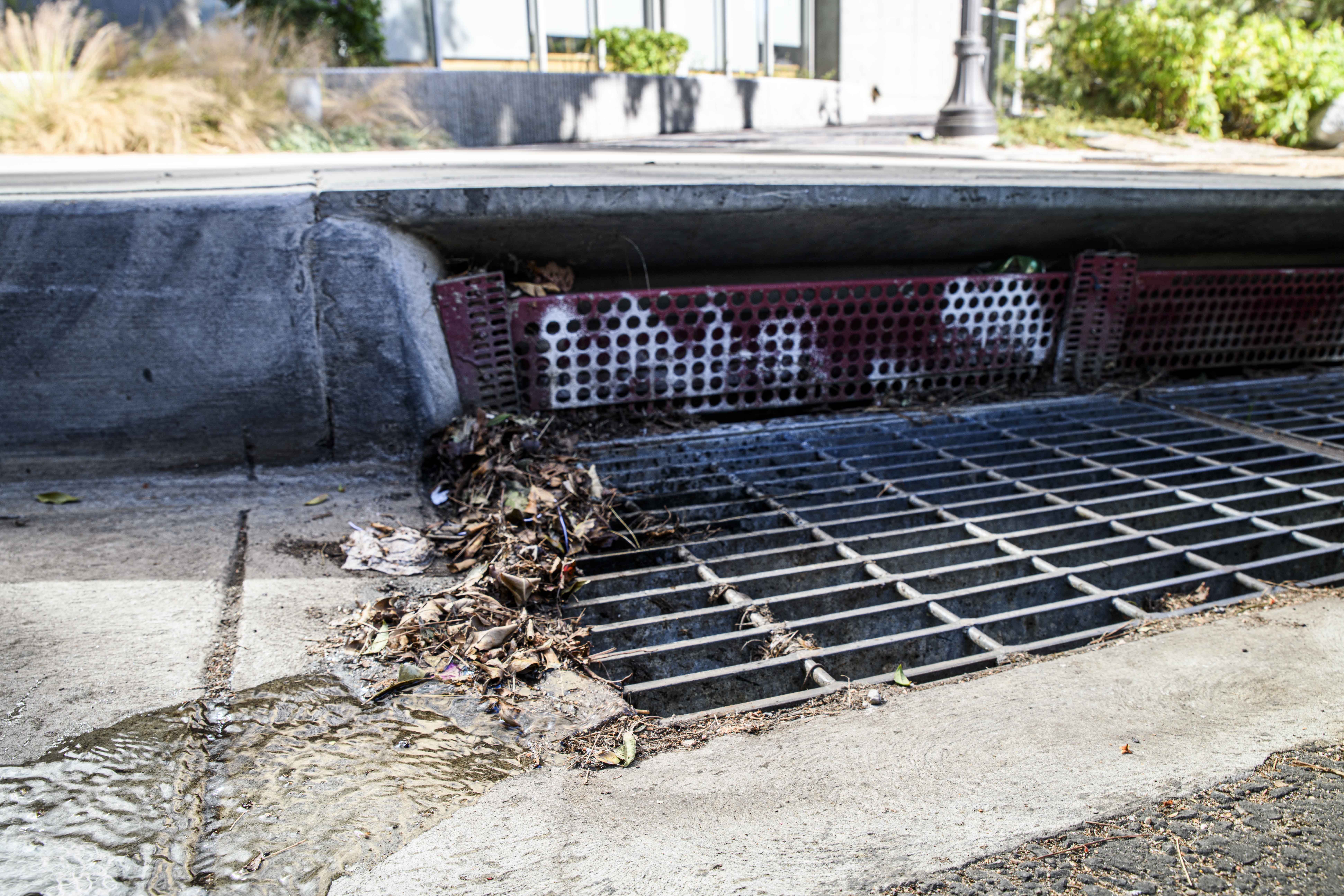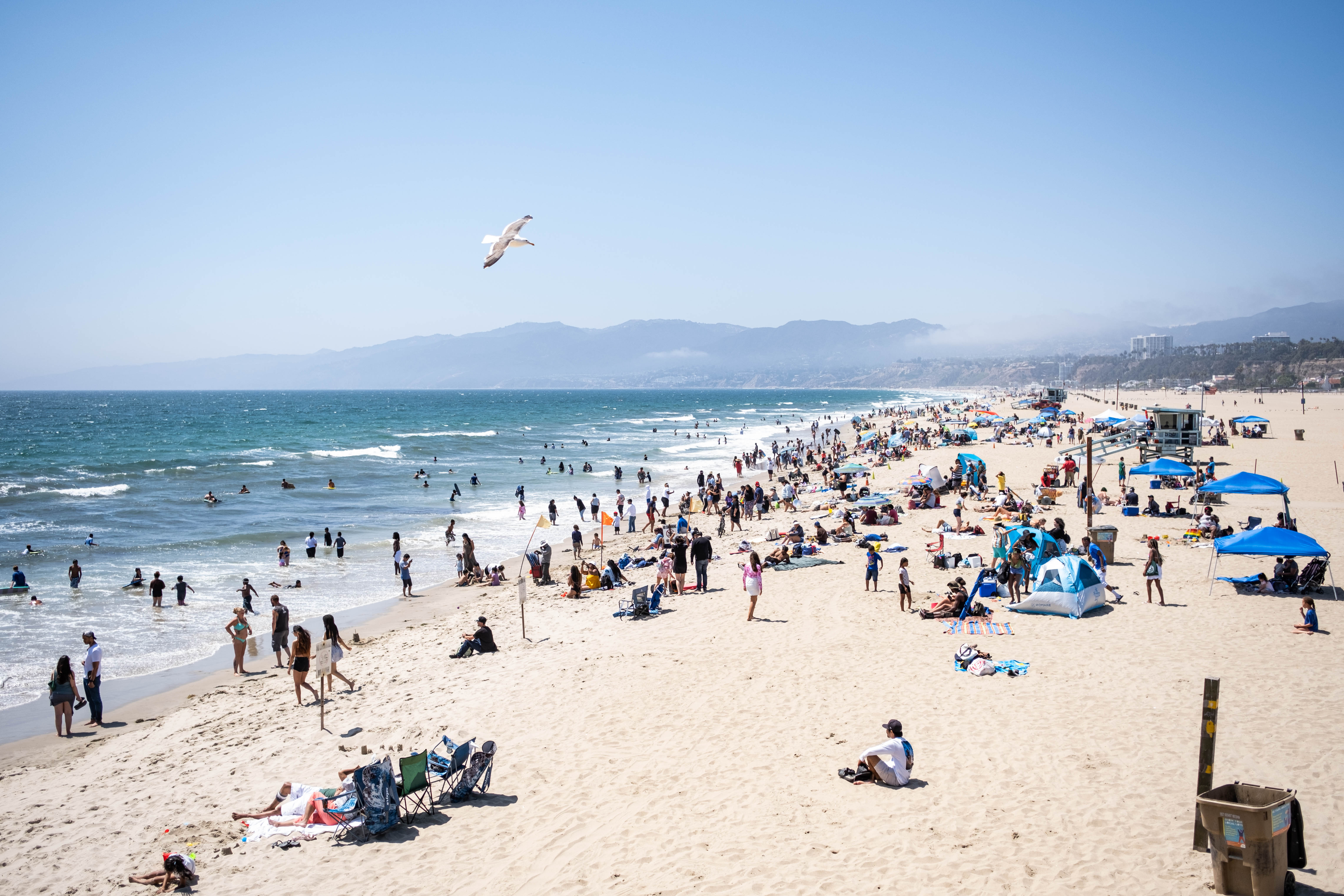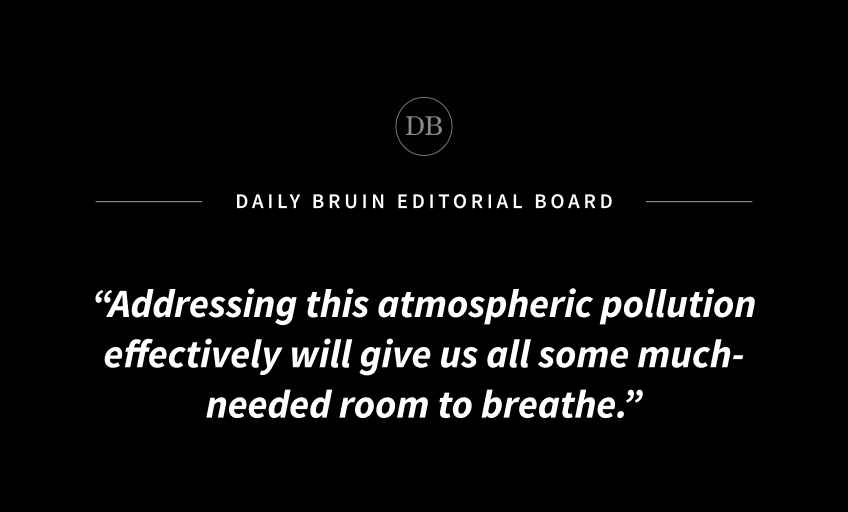Dissecting the issue of water pollution and the state of LA ocean advocacy efforts

Storm water runs into a drain. (Jeremy Chen/Daily Bruin senior staff)
By Anthony Li
Nov. 20, 2023 10:10 p.m.
When Japan announced plans to release wastewater stored at the deactivated Fukushima power plant into the ocean over the summer, various countries such as China and South Korea reacted with concern and animosity.
However, this is not the first time radioactive water has been released or accidentally washed into the ocean from this site. An earthquake and tsunami in 2011 caused the Fukushima Daiichi nuclear plant accident, which damaged the power supply and cooling of the reactors and caused the release of contaminated water.
The wastewater, which had been used to cool this plant following the incident, is what Japan released in August. China, Hong Kong, South Korea and several other governments have banned seafood imports from Japan in response.
Aside from Japan’s recent wastewater release, there are other types of water pollution happening in close proximity to Westwood. Types of water pollution include industrial wastewater release and stormwater runoffs. According to Trenchlesspedia, wastewater can be defined as water that has lost its potential to be used for domestic or industrial use because of contaminants such as harmful chemicals and radioactive substances.
Close to UCLA, the area of the Pacific Ocean that borders Los Angeles is heavily polluted with industrial chemicals, plastic products and oil spills and has been at the center of environmental activism since the early-mid 20th century. The city of Los Angeles established the Hyperion Water Reclamation Plant, aiming to deal with unregulated sewage release, which remains LA’s largest and oldest wastewater treatment facility.
However, in 2021, the plant illegally released 17 million gallons of untreated sewage and is currently facing a $21.7 million penalty for the release.
In light of such continued instances, UCLA scientists and activists are at the forefront of ocean protection issues.
James McWilliams, a professor in the department of atmospheric and oceanic sciences, was a lead researcher of a study on harmful algae blooms along the coast of Southern California. The study found that an excess of nitrogen in sewage wastewater causes algae blooms and leads to eutrophication, a process that depletes oxygen in water and thus leads to the death of marine populations. The team found that 97% of the nitrogen added to the ocean from human sources originates from wastewater. This was also the first time that eutrophication had been linked to wastewater.
“Human waste is processed in treatment plants … which then emit the processed pollution (water) into the ocean, usually several miles offshore, usually near the bottom 50 or 60 meters depth,” McWilliams said.
Although treatment facilities remove most harmful chemicals in wastewater, remaining traces of nitrogen still damage marine environments even if it is released deep in the ocean, according to the study.
Because of the harm involved in releasing wastewater, municipal facilities are put in place to control waste discharge to monitor the impacts of releases. The LA Regional Water Quality Control Board, for instance, issues waste discharge requirement permits to treatment plants and oversees the two treatment plants in LA.
McWilliams said that the history of regulations regarding wastewater treatment in LA dates back to the 1960s, and there have been three cycles of more stringent regulations. McWilliams added he hopes the LA Water Board will increase the stringency of allowable released nitrogen further.
“I think they probably will (increase regulations), but they haven’t yet,” McWilliams said. “And so it actually is a matter of contention with the water treatment plants that of course resist having to do more.”
The public can also influence the board’s decisions. According to the California State Water Resources Control Board, the organization that establishes statewide regulations and oversees regional water boards like the one in LA, the public can participate in meetings remotely and comment on the regulations at hand. In addition, recordings of meetings have also been posted on their YouTube channel for the public’s interest.
At UCLA, Bruins have also been creating their own means of influencing policy. For instance, the student organization CALPIRG focuses on advocacy and lobbying for environmental issues.
Lucy Kaff, a fourth-year physics student and the campaign coordinator for CALPIRG’s Save the Ocean campaign, is currently lobbying for expanding an additional 500 miles of marine protected areas in California. Kaff flew out to Sacramento in spring with many chapters of CALPIRG to lobby with various policymakers during CALPIRG’s annual Ocean Day.
“We’re trying to work closely with a sister organization Environment California to pitch proposals for where we think those 500 miles of shoreline should be to the Fish and Game Commission who are the ones who make this decision in December,” Kaff said.
Marine protected areas are designated areas of the ocean with the highest level of legal protection, said Luke Shen, a third-year sociology student and intern at Save the Ocean. MPAs are where human activities such as fishing and oil drilling are regulated, and the goal is to preserve marine habitats in their natural state, according to the Monterey Bay National Marine Sanctuary.
There are different types of MPAs, such as ones that prohibit all obtainment of natural resources. These policies of prohibiting human exploitation are just like how national parks protect special places on land, according to the California Ocean Protection Council.
Although students can participate in these advocacy events, this was not always the case. Kaff said the California Fish and Game Commission, which is part of the governmental collaboration on managing MPAs, decided where MPAs should be in 2012. Kaff added that since this decision, there have been very few public meetings to provide input on future MPAs.
“They’ve since changed their process to be every three years and to allow public input. So that’s one of the things that CALPIRG achieved over the summer so now we actually get to utilize our win there,” Kaff said.
In fact, several agencies involved in MPA regulation held a series of meetings for public input on policy this year beginning March 15.
Along with the rise in public advocacy, the government is making more efforts to push forward environmental protection. California Gov. Gavin Newsom signed an executive order named 30×30 on October 7, 2020, which aims to conserve at least 30% of California’s land and coastal waters by 2030, according to the California government’s website.
Shen said that compared to other environmental advocacy campaigns, this kind of goal may be more logistically feasible.
“The good thing also about this kind of goal is that it’s different from like converting to 100% clean energy, for instance, because you don’t have to remove any existing infrastructure,” Shen said. “You’re just protecting an area that already exists.”
Despite the volume of opportunities for combatting different forms of pollution, people appear to be most concerned about frightening environmental issues like radioactivity, McWilliams said. However, many more pollutants will potentially damage the ocean and our health. McWilliams added that there are pollutants such as Dichlorodiphenyltrichloroethane that stay in the environment for a long time, and they can build up in the food chain and be ingested by humans.
“There was a great deal of dumping of DDT waste, not very far offshore (of LA). And it spread into the ecosystem and little fish were eaten by big fish and it would get more and more concentrated,” McWilliams said. “That is certainly an example of how even small concentrations of certain kinds of pollution can get concentrated in the animals and of course including the humans.”
Kaff said it is important for people to be educated about environmental pollution and know about the work being done. She added that CALPIRG will be organizing a beach cleanup event and a new project to get people to fill out public comments for MPAs to increase awareness of the issue.
“Hopefully there will be some sort of media visibility there, so that the general public can become aware like where the MPAs possibly could be,” Kaff said. “We also are working … to get people to fill out public comments for Fish and Game Commission meetings because you actually can public comment at them, which is really exciting.”





